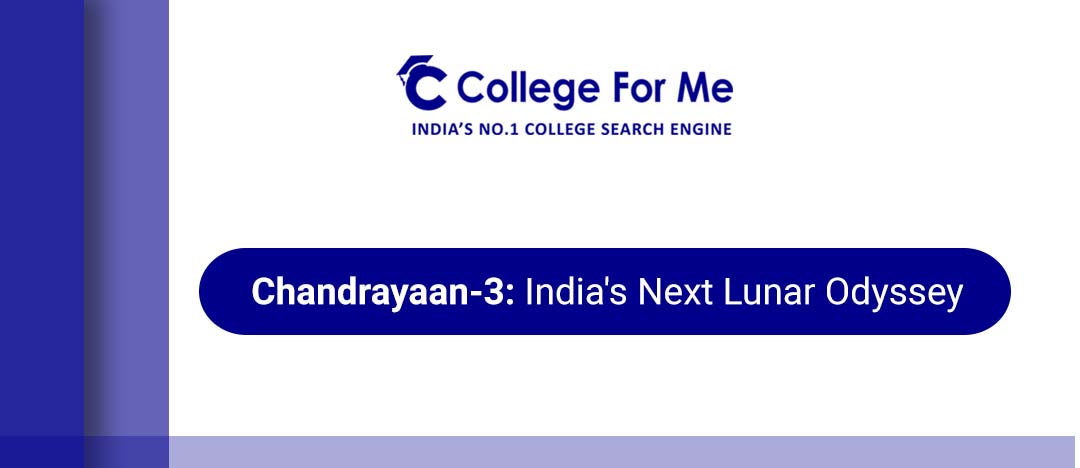Career Scopes Of A B.Tech. Student
There is a high demand for B.Tech. degree holders in the private sector, yet, there is also the opti...

India's space agency, the Indian Space Research Organisation (ISRO), has been making remarkable strides in space exploration. Among its notable missions, Chandrayaan-3 stands out as a continuation of India's lunar exploration endeavors.
Let's delve into all you need to know about Chandrayaan-3 and its significance.
The Chandrayaan Series:
Chandrayaan-3 follows in the footsteps of its predecessors, Chandrayaan-1 and Chandrayaan-2. Launched in 2008, Chandrayaan-1 was India's first lunar mission, confirming the presence of water molecules on the Moon's surface. Chandrayaan-2, launched in 2019, included an orbiter, a lander named Vikram, and a rover named Pragyan. While the orbiter continues to send valuable data, the lander and rover's attempted soft landing didn't go as planned.
Chandrayaan-3's Objective:
The primary objective of Chandrayaan-3 is to attempt a soft landing on the Moon's surface. This mission aims to refine ISRO's landing technology after the unexpected setback during the Chandrayaan-2 mission.
Lander-Rover Configuration:
Chandrayaan-3 is designed as a lander-rover mission without an orbiter. The lander will serve as the vehicle to carry the rover to the Moon's surface. The rover will then conduct scientific experiments and gather data about the lunar terrain.
The Role of Technology:
Chandrayaan-3 will utilize the experience gained from Chandrayaan-2's landing attempt. Engineers and scientists have refined the technology to ensure a successful soft landing, addressing the challenges faced during the previous mission.
Cost-Effective Approach:
By excluding an orbiter from Chandrayaan-3, ISRO is adopting a cost-effective approach to focus solely on achieving a successful landing. This decision allows ISRO to concentrate its resources on the specific technology required for this mission's objective.
Global Collaboration:
While Chandrayaan-3 is primarily an Indian mission, ISRO has been open to collaboration with international space agencies. Such collaborations can provide valuable insights, shared resources, and a broader understanding of lunar exploration.
Public Interest and Education:
Chandrayaan-3 not only contributes to scientific research but also ignites public interest and enthusiasm for space exploration. Such missions inspire the younger generation to pursue careers in science, technology, engineering, and mathematics (STEM).
Timing and Future Missions:
As of my knowledge cutoff in September 2021, the launch date of Chandrayaan-3 has not been finalized. However, its development showcases ISRO's dedication to learning from past experiences and pushing the boundaries of space exploration.
Aiming for Success:
Chandrayaan-3 symbolizes ISRO's resilience and determination to overcome challenges. It is a testament to the agency's commitment to pushing the boundaries of human knowledge and technological capabilities.
Chandrayaan-3 represents India's unwavering dedication to lunar exploration, scientific discovery, and technological advancement. As ISRO continues to strive for success in this endeavor, Chandrayaan-3 stands as a testament to the agency's ability to adapt, innovate, and reach new heights in space exploration.

There is a high demand for B.Tech. degree holders in the private sector, yet, there is also the opti...

If you are looking for a bright and prospective career, then getting a B.Tech. in CSE must be under ...
Comments (0)